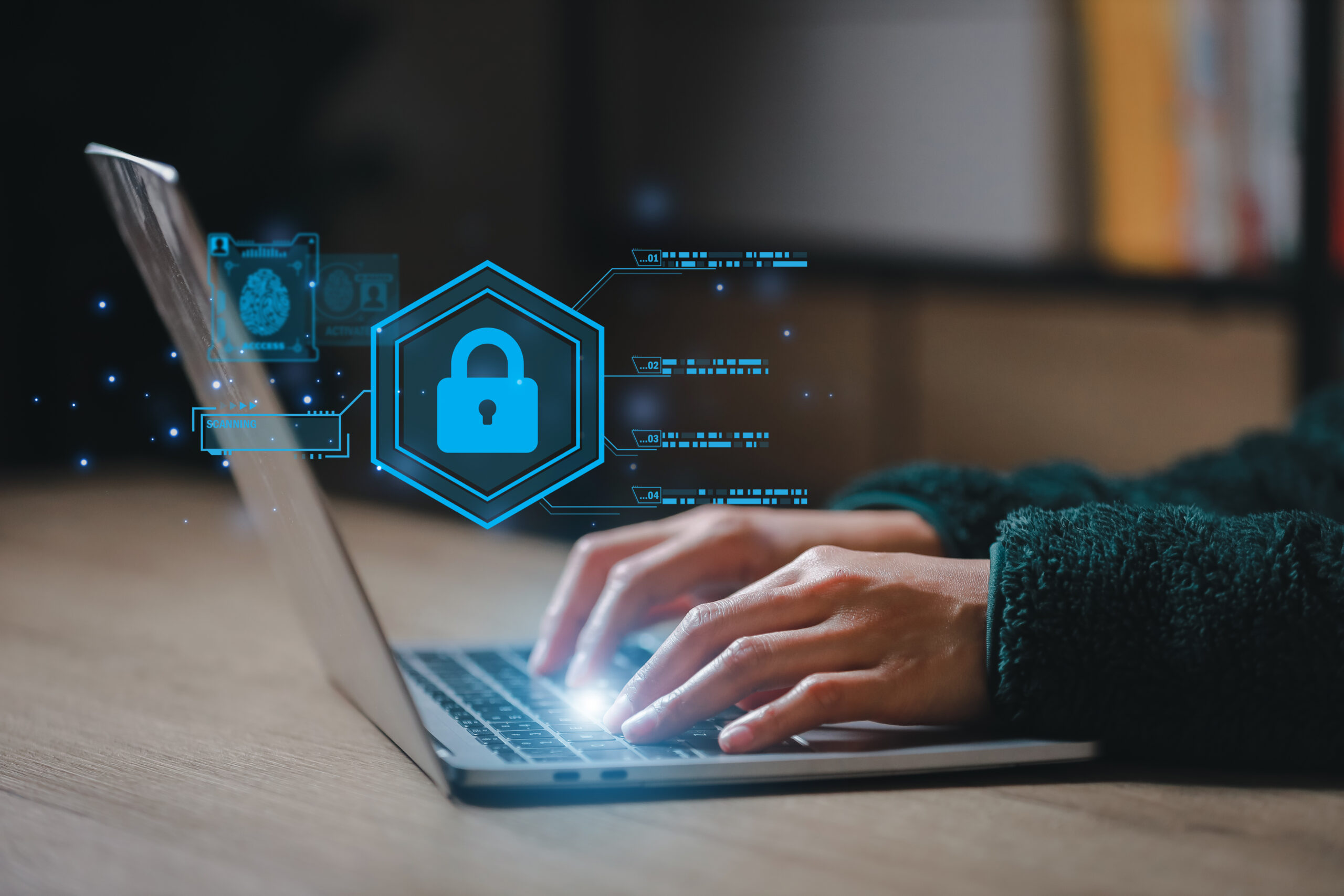
How to Set Up Cybersecurity for Your Small Business in 2025: A Step-by-Step Guide
Introduction: Why Cybersecurity Is No Longer Optional
Cybercrime is no longer a “big business problem.” In 2025, 43% of cyberattacks target small businesses—yet most owners mistakenly think they’re too small to be at risk. Hackers know smaller companies often lack the budget, staff, or systems to defend themselves, making them the easiest targets.
A single phishing scam, ransomware attack, or stolen customer database can cost thousands of dollars, legal trouble, and reputational damage. Worse, studies show 60% of small businesses close within six months of a major cyberattack.
The good news: with the right systems, tools, and habits, you can protect your small business without needing an IT department or enterprise budget. This guide will show you step by step how to build a practical, affordable cybersecurity setup in 2025.
We’ll cover:
- The biggest cyber threats facing small businesses today.
- Essential cybersecurity tools (firewalls, VPNs, backups, etc.).
- Step-by-step implementation of strong security policies.
- Training your employees to recognize threats.
- Ongoing monitoring and future-proofing.
By the end, you’ll have a blueprint for securing your business and keeping customers’ trust intact.
Understanding the Threat Landscape
Before you can protect your business, you need to know what you’re protecting against.
1. Common Threats in 2025
- Phishing & Social Engineering: Hackers trick employees into clicking malicious links or sharing passwords.
- Ransomware: Malicious software that locks your files until you pay a ransom.
- Data Breaches: Hackers steal sensitive customer or payment data.
- DDoS Attacks: Overwhelming your website with fake traffic to knock it offline.
- Insider Threats: Disgruntled employees or careless staff leaking data.
2. Why Small Businesses Are Targets
- Lack of dedicated IT security staff.
- Reliance on outdated software.
- Use of personal devices for work.
- Belief that “hackers only go after big companies.”
3. The Cost of Ignoring Security
- Lost revenue during downtime.
- Customer churn due to lost trust.
- Regulatory fines (GDPR, PCI-DSS, HIPAA, depending on industry).
Building Your Cybersecurity Foundation
Think of cybersecurity as building a digital fortress. Here are the pillars:
1. Strong Password Policies
- Require 12+ character passwords with symbols, numbers, and caps.
- Enforce password managers like LastPass, 1Password, or Bitwarden.
- Enable multi-factor authentication (MFA) everywhere (email, banking, CRM).
2. Device Security

- Ensure all laptops and phones have updated antivirus/antimalware (Bitdefender, Norton, or Windows Defender).
- Enable disk encryption (BitLocker for Windows, FileVault for Mac).
- Require screen locks and auto-timeouts.
3. Network Security
- Use business-grade routers/firewalls (Ubiquiti, Cisco Meraki).
- Segment Wi-Fi for guests vs staff.
- Deploy VPNs (NordLayer, Perimeter 81) for remote access.
4. Software Updates
- Set up automatic updates for operating systems and apps.
- Replace outdated hardware/software that no longer receives patches.
Essential Cybersecurity Tools for SMBs
1. Firewalls
Act as a gatekeeper between your business network and the internet.
- Hardware firewalls: Cisco Meraki, SonicWall.
- Cloud-based firewalls: Zscaler, Cloudflare Zero Trust.
2. Endpoint Protection
Protects each device connected to your network.
- Best options in 2025: CrowdStrike Falcon, Bitdefender GravityZone.
3. Backup Solutions
A ransomware attack is less scary if you have backups.
- Local backups: NAS drives (Synology, QNAP).
- Cloud backups: Backblaze, Acronis, Dropbox Business.
- Golden Rule: 3-2-1 Strategy → 3 copies of data, 2 different media, 1 offsite.
4. Email Security
- Use spam filters (Proofpoint, Mimecast).
- Train employees to spot phishing attempts.
- Block suspicious attachments.
5. Access Controls

- Limit access to sensitive files based on job role.
- Use Identity & Access Management (IAM) systems like Okta.
Employee Training & Cyber Hygiene
Your employees are your biggest risk and your best defense.
1. Train Employees Regularly
- Quarterly cybersecurity training.
- Simulated phishing tests (KnowBe4, PhishMe).
2. Clear Policies
- No personal devices for work (unless protected).
- No sharing passwords.
- Rules for safe remote work.
3. Foster a Security Culture
- Encourage staff to report suspicious emails.
- Reward compliance instead of punishing mistakes.
Creating a Cybersecurity Response Plan
Even with the best defenses, breaches can happen.
1. Incident Response Plan
Outline:
- Who to contact (IT provider, legal counsel).
- Steps to contain the breach (disconnect infected systems).
- Recovery process (restore from backups).
2. Communication Plan
- Inform employees and customers quickly.
- Be transparent while reassuring clients.
3. Insurance
Cyber liability insurance can help cover costs of breaches.
Compliance & Regulations
Depending on your business type, you may be legally required to meet certain cybersecurity standards:
- PCI-DSS (if you process credit cards).
- HIPAA (if you handle healthcare data).
- GDPR/CCPA (if you deal with customer data in certain regions).
Non-compliance = fines + lawsuits.
Future-Proofing Cybersecurity in 2025–2030
1. AI & Automation
- AI tools can now detect suspicious activity faster than humans.
- SMB-friendly AI security platforms: Darktrace, SentinelOne.
2. Zero-Trust Architecture
- No device/user is automatically trusted.
- Access granted only after verification.
3. IoT Device Security
As more small businesses adopt IoT (smart cameras, sensors, POS devices), securing them is crucial.
4. Regular Audits
Annual security reviews keep you ahead of evolving threats.
FAQs
Q1: How much should a small business spend on cybersecurity?
Answer: Around 5–10% of your IT budget is a good starting point.
Q2: Do I need an IT team, or can I manage this myself?
Answer: Many SMBs outsource to Managed Security Service Providers (MSSPs).
Q3: Is free antivirus software enough?
Answer: No. Free tools lack enterprise-grade protection.
Q4: How often should we back up data?
Answer: Daily backups are recommended, especially for customer data.
Conclusion: Your Small Business Cybersecurity Roadmap
Cybersecurity is no longer an afterthought—it’s as important as your locks, alarm system, or insurance. With the rise of digital payments, cloud apps, and remote work, your small business is more connected than ever—and more vulnerable than ever.
The good news? By following this step-by-step guide, you don’t need a massive budget or an IT department to stay safe. Start with the basics—strong passwords, firewalls, backups—then build up to advanced tools like endpoint detection, IAM, and AI monitoring.
A secure business is a trusted business. In 2025, cybersecurity is not just protection—it’s a competitive advantage.